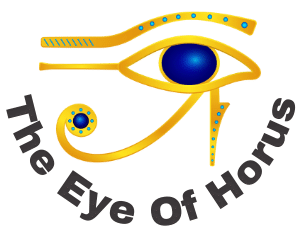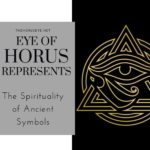Eye of Horus History was used by both the living and the dead as a funerary amulet in Egyptian mythology, about 3000 years BC.
The Wedjat Eye, another name for the Eye of Horus, is an ancient Egyptian symbol with a complicated past. The emblem was connected to the god Horus and stands for strength, protection, and healing. Horus was a god who was revered in Egyptian mythology as a sky god, a god of kingship, and a god of protection. Legend has it that Horus lost his left eye in a conflict with his violent and chaotic uncle Set.
The god Thoth, who is associated with writing and intelligence, later restored the eye. The repaired eye of Horus became a potent representation of healing and protection, and it was thought to have the power to fend off evil and advance well-being. The Egyptian pharaohs, who were considered to be Horus’ earthly personification, were also linked to the Wedjat Eye.
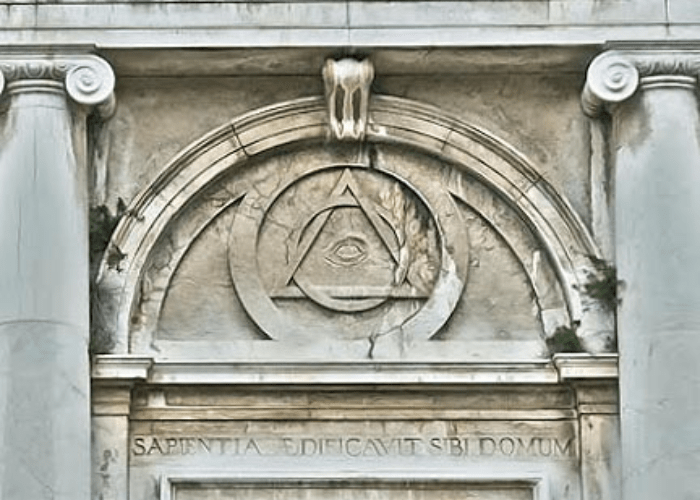
The Wedjat Eye is sometimes shown as a stylized human eye with markings that correspond to those on Horus’s eye. The brow, the pupil, the iris, and the marks around the eye are some examples of these markings.
Ancient Egypt used the Eye of Horus in a number of religious and cultural contexts, including amulets for protection, funerary rituals, and various works of art and symbolism. The Eye of Horus is still utilized frequently in jewelry, tattoos, and other pieces of art in contemporary society.
Horus and Ancient Egyptian Mythology
One of the most widely-worshipped gods in ancient Egypt, Horus is a well-known figure in Egyptian mythology. As a sky god who represented monarchy, protection, and the afterlife, Horus was revered.
Horus was the son of Osiris and Isis, two other important gods in Egyptian mythology. Horus was thought to be the legitimate heir to the Egyptian pharaoh, but Set, his violent and chaotic uncle, killed his father and claimed the throne for himself.
Horus was portrayed in ancient Egyptian art in a number of different ways, although he was most frequently portrayed as a falcon or a man with a falcon’s head. The Eye of Horus, a potent representation of healing and protection, was also connected with the god.
The Egyptian pharaohs, who were considered to be Horus’ earthly manifestations, were thought to be protected and defended by the mighty Horus. The god was frequently seen with wings or donning a solar disc. He was also related to the sun and the sky.
Horus was associated with the afterlife in Egyptian mythology and was thought to aid in directing the souls of the deceased to the afterlife. Horus’ mythology changed over time, and certain facets of the god’s character and traits were more or less prominent at various points in Egyptian history.
The Eye of Horus Symbol and Protection
Ancient Egyptian symbol for protection, healing, and strength is the Eye of Horus, sometimes called the Wedjat Eye. The emblem is frequently shown as a stylized human eye with markings that correspond to the marks on Horus’s eye.
The Eye of Horus was associated with good health and the ability to fend off evil in ancient Egyptian mythology. The image was frequently included in protective amulets that both the living and the deceased wore.
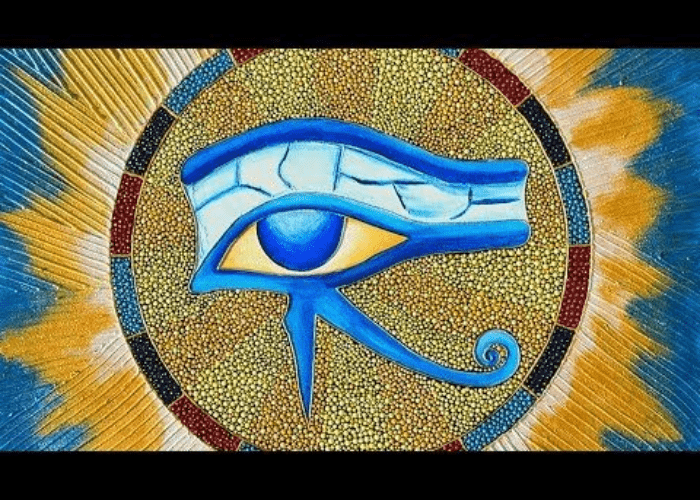
The Egyptian pharaohs, who were considered to represent Horus’ earthly manifestation, were also linked to the Eye of Horus. The pharaohs utilized the sign in their funeral rites because they thought it would aid their souls find their way to the afterlife.
Ancient Egyptian art and architecture both included the Eye of Horus. The emblem was frequently employed in temple décor and occasionally included other gods or symbols.
The Eye of Horus in Ancient Egyptian Culture
The Wedjat Eye, often called the Eye of Horus, was a key figure in mythology and ancient Egyptian culture. The emblem was linked to the god Horus and stood for strength, protection, and healing.
The earliest stages of ancient Egyptian history are when the legend around the Eye of Horus first emerged. Legend has it that Horus lost his left eye in a conflict with his violent and chaotic uncle Set. The god Thoth, who is associated with writing and intelligence, later restored the eye.
The restored eye of Horus evolved into a potent representation of healing and protection. It was thought to be able to fend against evil and support wellness. The pharaohs of Egypt were likewise connected to the Wedjat Eye. The Egyptian pharaohs, who were considered to be Horus’ earthly personification, were also linked to the Wedjat Eye.
Ancient Egypt had many different religious and cultural uses for the Eye of Horus. It was used in protective amulets, burial rituals, and other works of art and symbolism. The emblem was frequently employed in temple décor and occasionally included other gods or symbols.
The Eye of Horus in Modern Times
The Wedjat Eye, also known as the Eye of Horus, is still a well-known emblem today and is still linked to power, healing, and protection. Numerous cultures and belief systems have adopted the sign, which is frequently used in popular culture, fashion, and the arts.
The Eye of Horus has appeared in a number of contemporary works of art and design. It is frequently utilized in jewelry, apparel, and accessories and has been embraced as a sign of individual individuality and strength by numerous subcultures.
The Eye of Horus has also been incorporated into mainstream culture, showing up in television shows, video games, and other media. It is utilized to evoke a sense of mystery and intrigue in a variety of stories and narratives and is frequently linked to magic and mysticism.
The Eye of Horus is still employed in a number of spiritual and religious rituals in addition to its application in popular culture. It is frequently utilized in healing rituals and meditation techniques and is thought to have the ability to fend off bad energies while fostering good energy and well-being.
Generally speaking, the Eye of Horus has endured throughout history and is still meaningful and significant today. The emblem symbolizes the lasting influence of ancient Egyptian mythology and culture, whether it be applied in spiritual practices, popular culture, or personal expression.
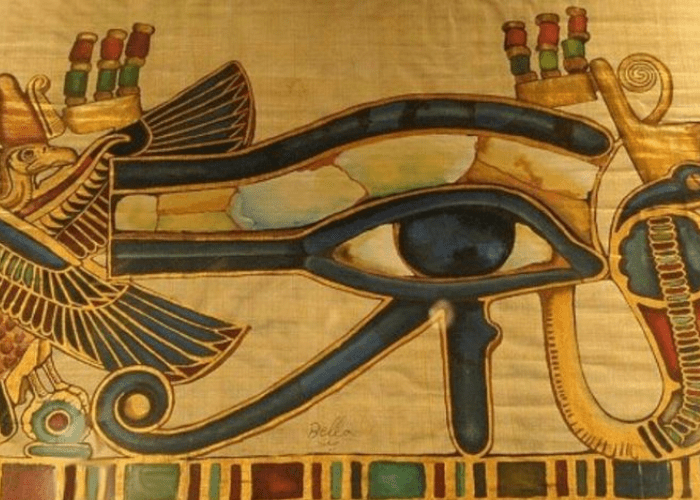
The eye of Horus is first seen in a 5th Dynasty tomb in Abydos, where it is shown as an amulet on one of the caskets. It is thought that the owner of the tomb left this amulet there for storage. Although its purpose is uncertain, it could have been to stave off bad spirits or shield individuals who were being buried in the tomb from perils outside.
What Did the Horus Eye Represent?
The eye stood in for the deity Horus, who was frequently shown with the head of a falcon and occasionally with a sun disc on his head or breast. Two crossing lines that make up the eye stand symbolically for life and death. The Egyptians thought they could not see someone with the eye or their ill intentions if they gazed directly at them.
Osiris, who was murdered by Set, is said to be the originator of the notion that the eye symbolizes protection. Horus, the brother of Osiris, assassinated Set to retake the Egyptian throne. Horus became connected with the eye as a means of self-protection from foes in order to guarantee that he would continue to hold power after defeating Set.
Eye of Horus History: An Egyptian Symbol
The Eye of Horus is a representation of authority and protection. It symbolizes the sun, which is in its zenith position throughout the summer. Additionally, it symbolizes a more kind-hearted side of Ra, who is sometimes linked to the sun in mythologies.
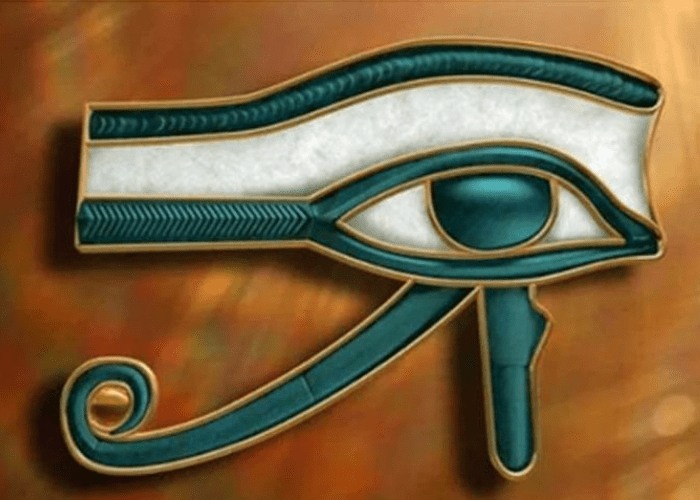
The eye also stands for knowledge and intelligence, as well as life and rebirth. One story claimed that when Osiris beat Set, Ra was created from an egg with an eye in it.
The History Behind the Eye of Horus
The deity Horus, who personifies the sky and is frequently shown in artwork with an ostrich feather plume on his head, is sometimes linked to the Eye of Horus. The emblem can also be seen in many other places, like temples, tombs, and representations of gods like Isis and Osiris.
In Egyptian art and architecture, it frequently appears as an iconographic theme. Historians and academics have argued over the significance of this emblem for many years. Some think it symbolizes the sun, while others assert that it does so for the moon. It has occasionally also been seen as a symbol of authority and power.
The Masculine Mythology of the Eye of Horus
The Eye of Horus is a representation of defense against evil powers. Horus’ left eye was made of lapis lazuli, while the right eye was composed of gold.
The king and queen both wear the right eye on their crowns. It stands for strength, discernment, and justice. Priests wear the left eye to ward off bad spirits while performing rituals. It stands for wisdom, accuracy, and fairness.
What Does Seeing the Eye of Horus Mean?
This sign has many distinct meanings, but one of them is that it stands for healing and protection. The Egyptians utilized this sign to guarantee that nothing unpleasant occurred to them during combat or when engaging in physical activity because they thought that if they had a wounded eye, they would lose their sight and if they had a damaged foot they would lose their balance.
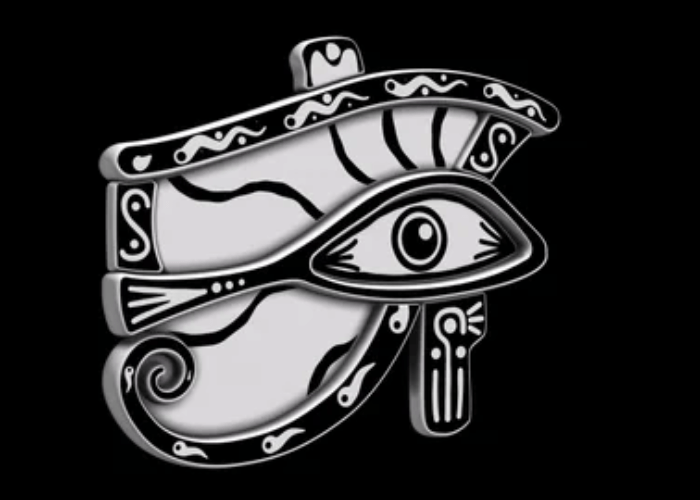
They also thought that if you got this sign tattooed on your body, you would be shielded from bad luck or unfortunate occurrences like accidents, illness, etc…
The Mystical Power of Horus’s Eye
A human eye, an eyeball with a solar disk above it, and a staff topped by an eyeball with three plumes (or feathers) sprouting from its top are just some of the various ways that the Eye of Horus is represented in art. It is linked to the goddess Wadjet in various settings, who was thought to be able to shield her wearer from harm by driving away evil spirits.
Protection and healing, especially when it comes to one’s health and well-being, have long been linked to the Eye of Horus. It stood for the guardian in ancient Egypt, which meant you could turn to it for support if something untoward happened in your life or the life of someone else.
